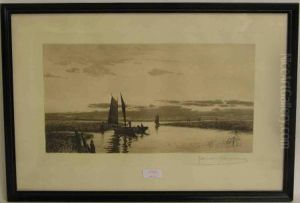Hermann Koenemann Paintings
Hermann Koenemann was a German artist, born in 1893 in Bremen, Germany. His early life was marked by the cultural richness of the late 19th and early 20th centuries in Germany, a period that was crucial for the development of his artistic vision. Koenemann's education and artistic training occurred during a vibrant time for German art, with movements such as Expressionism beginning to take form. Despite the lack of widespread recognition, Koenemann's work contributed to the tapestry of German art in the first half of the 20th century, reflecting the tumultuous social and political climate of his times.
Koenemann's career spanned several decades, during which he navigated the challenges of both World Wars and the interwar period. His art was influenced by the Expressionist movement, characterized by its emphasis on emotional experience over physical reality. This influence is evident in his use of bold colors, dynamic compositions, and subject matter that often delved into the psychological and existential. However, Koenemann's work also retained a distinct personal signature, setting it apart from that of his contemporaries. He experimented with various mediums, including painting, printmaking, and drawing, exploring themes of human condition, nature, and the urban environment.
Throughout his career, Koenemann faced the difficulties of artistic expression under the Nazi regime, which promoted a very different aesthetic and condemned modernist movements like Expressionism. Despite these challenges, he continued to work and develop his artistic voice, although much of his work from this period remains under-recognized. After World War II, Germany's art scene was radically transformed, with artists seeking new ways to express the trauma and devastation of the war. In this context, Koenemann's post-war works reflected a shift towards more somber themes and a more subdued palette, mirroring the collective grief and rebuilding of post-war Germany.
Hermann Koenemann passed away in 1959, leaving behind a body of work that, while not widely known, offers valuable insight into the experience of German artists working through some of the most tumultuous periods of the 20th century. His contributions to German art, particularly within the context of Expressionism and its aftermath, highlight the resilience and complexity of artistic expression in the face of societal upheaval. Today, Koenemann's work is appreciated by art historians and collectors who recognize the significance of his artistic legacy within the broader narrative of European art history.





